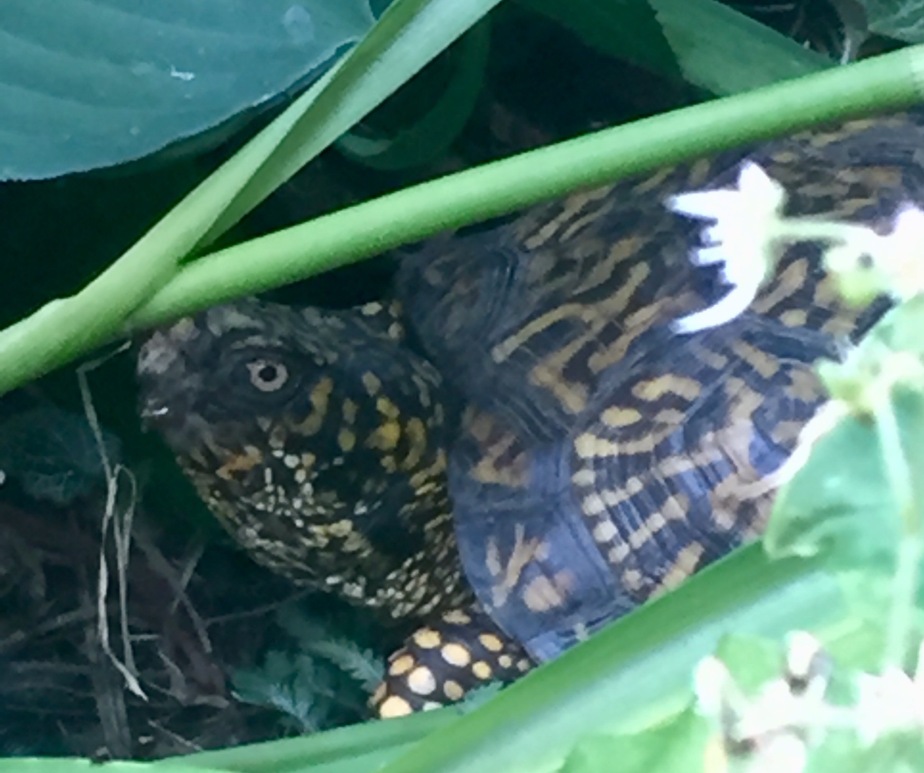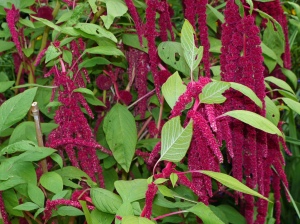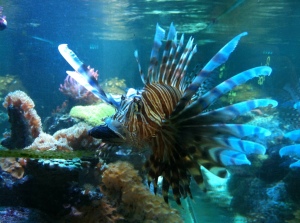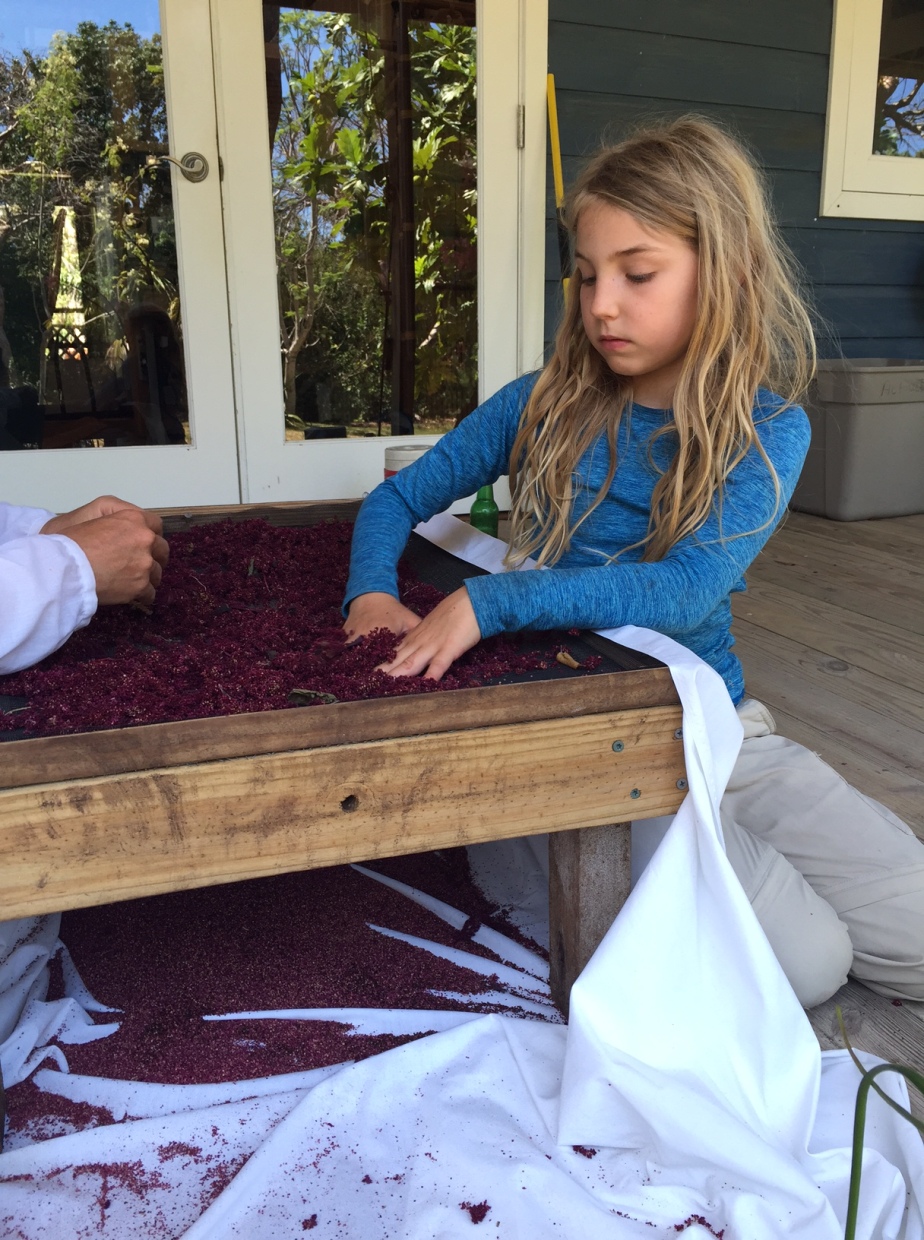This little guy has been helping us in our garden. Aside from eating the occasional strawberry, he’s been eating our pesky Gastropods…that is our snails and slugs. Plus he’s super pretty and friendly!
Protecting the bees & wasps
I
Beginning last summer, I tossed a few zinnia seeds into a poorly used and poorly tended section of my yard. I wanted to have something cheery planted there since I would be traveling a bit and would be unable to tend a vegetable garden. The section is about 10 ft by 10 ft and organic.
Low and behold my garden has become a haven for butterflies, bees, and wasps. When I stand near that area, I am astonished by the sounds. Buzzing, chirping sounds at a high decibel level radiate from that area. The pollinators have definitely discovered it!
What’s more is that the pollinators, especially the wasps, have helped to keep my bug invaders in check. I actually found a tomato chomper covered in wasp eggs. A parasitic wasp lays its eggs directly on the caterpillar so that the hatched larvae can feast on it.
Additionally, the wasps eat flies and spiders. So, for next year, I’m planting some flowers closer to my compost bins. The compost bins will sometimes breed flies if I fail to cover the fresh kitchen trash with wet cardboard. Wasps to the rescue!Harvesting the vermi-compost
It’s time to harvest our vermi-compost. After months of our worms eating away our kitchen waste, we now have a beautiful, earthy, brown/black compost loaded in nutrients for our plants. Additionally, for months now, we have been using the worm “tea” (a liquid that drains from the worm bin) as a fertilizer for our houseplants. There has been a noticeable difference in the appearance of the plants…more lush, more green.
To harvest the compost, Anna and I make small piles of it on a bright day. The worms seek to escape from the bright sun and congregate on the bottom of the piles…so was the theory anyway. We did have a bit of a time collecting all our worms to use in our worm bucket once again. Regardless though, they will either end up in the worm bucket or in our garden.
We have ordered more worms since we have since discovered that we need 1000-2000 worms in our bucket to handle the amount of kitchen waste we produce. I expect we will be able to harvest compost much more quickly.
For those of you interested in vermi-composting, I highly recommend it. The worms silently do their work with little, to no smell. The smell you may notice is “earthy”, not sour. You will be saving compostable materials from ending up in landfills and improving your garden.
Consider it! Email us if you need more information.
Hydroponics and worm farm
Well, Anna has been busy. She just received her shipment of red wiggler worms and has made herself a small worm compost. It’s in the downstairs bathroom off the kitchen. For the first few days, the worms were restless. They kept getting into the drainage (worm tea) bucket and had to be fished out. They finally seem happy now. Interestingly, they don’t seem to eat as much kitchen scraps as one would have hoped. They eat about half their weight per day. So for our family, with the number of worms we have, that means about a sandwich crust and a piece of lettuce every few days. Their numbers will grow though. They can double their colony every 90 days, so by the end of the year, we should have over 1000 worms. Let us know if you would like to start your own farm and we will share our growing colony with you.
We hope to use the worm tea in our hydroponic garden. We are currently using a plant food product we bought at a store, once every 2 weeks. We plan on replacing that product with the worm tea after the worms do their thing…maybe in a couple of weeks. We are growing dill, parsley, mint, thyme and basil. We have harvested the basil several times and had enough to make 8 pesto pasta dinners. Wow! We have plenty of the other herbs as well, but we will have to look up some recipes for those.
Lastly, we are experimenting with another hydroponic where the plants are submerged in water that has bubbles passing through it. That is not doing as well. Maybe we have to tweek the design, but the bubble (air pump) is running constantly, so I doubt the design would perform well on an efficiency scale.
Anna Studies Solar Ovens – At Home
Because we built a solar oven in the Bahamas, we wanted to build one at home. Anna and I incorporated a solar oven project into her homeschool studies. Below is her write-up of our work.
Anna, age 9…Solar ovens are a good idea because of many reasons. For example, wood is scarce in Africa and many other places, so women have to walk a long way to find wood. Another reason, people have been injured from burns and smoke; solar ovens wouldn’t do that. Also, fires make pollution.
In my research, I discovered that there are several different designs of ovens which cook food in different ways. I made 5 solar ovens with my mom. We made rice, beans, potatoes, and brownies (and more BROWNIES). I compared two of my ovens scientifically. The two that I compared were alike except for shininess. One was painted black inside. These designs were made from boxes. I lined the boxes with shiny bubble wrap. My mom cut glass tops for the boxes. The sides were cardboard, and I lined those with the shiny bubblewrap, too.
I tested my designs by putting them in the sun with a thermometer inside of each. After 30 minutes, I checked the temperatures. The shiny oven was just a little bit warmer than the one painted black. The shiny one was 225ºF, and the black one was 220ºF. So, the shiny oven might be a better design.
There is an organization called “The Women of Hope”. They teach women in Africa how to make cards. The women sell the cards to make money for their families. They use some of their money to buy charcoal. Solar ovens could help them.
Baby Chicks!
John Bondo’s Blog Bit (age 11)
Yesterday, Ms. Leslie’s little chicks hatched. They are so cute and fuzzy and yellow, but, the only problem is that there has been a recent mosquito hatch and so we can’t watch the chicks for long periods of time without being eaten alive!
It took 21 days for the eggs to hatch. Once chicks hatch, they can live for 72 hours without food because they take the yolk into their abdomen through an umbilical-like cord just prior to hatching. After that, they start to pip. Pipping is when a chick pecks at the shell. There is an air pocket inside the egg, so that once the chick pecks into the air pocket it will start to “peep”. After that, it may rest. The chick has a special egg tooth on the tip of their beak which helps it to break the shell. The tooth will fall off a few days after hatching. After its rest, it will start again pecking at the shell. At last, it gives a final big kick with its big feet and it’s free. 
Anna’s Hermit Crab
Anna’s Blog Bit (age 9)
I found a hermit crab one day. I loved him so much that I wanted to keep him. I had a container bowl, 12 inches across and 6 inches deep. I filled it with sand for the flooring. I put a little, purple lid for his bath. For his water dish, I filled a little shell with water. I found a plastic cap and filled it with food. The first food he ate was pancakes, so I named him “Pancake”. I kept him for 5 days. On the third day, my mom found two more hermit crabs; one for her and one for my brother. We had a hermit crab race. We made a circle in the sand on Bill and Leslie’s beach. Then, we put the hermit crabs in the middle of the circle. When we clapped our hands over them, they started to crawl. My mom’s crab won the first round; I won the second round; and John Bondo won the third round. We ended in a tie. John Bondo and mom let their hermit crabs go. I kept mine. Later, I made a house for him by cutting out a section of a cereal box and pushing it in the sand. I knew his shell is his real home, but I thought it would be funny to have another house. He really liked it, but the next day, he escaped. I looked everywhere. John Bondo found him…he didn’t even get up to look for him…he was just sitting there and spotted him. I thanked him for being so lazy. I could hold my hermit crab, and he would not pinch me. On the fifth day, my dad returned to the island. After I showed my hermit crab to him, we let him go.
the sand. I knew his shell is his real home, but I thought it would be funny to have another house. He really liked it, but the next day, he escaped. I looked everywhere. John Bondo found him…he didn’t even get up to look for him…he was just sitting there and spotted him. I thanked him for being so lazy. I could hold my hermit crab, and he would not pinch me. On the fifth day, my dad returned to the island. After I showed my hermit crab to him, we let him go.
Sometimes Stuff Breaks
John Bondo’s Blog Bit (age 11)
You might have wondered why I haven’t posted for awhile? Sometimes stuff breaks! The WiFi was out, and the internet was out. My dingy’s motor wasn’t working. My mom’s boat wasn’t working either; we had no way off the island. Until, my mom with help from Bill and Leslie (by phone) and some of their friends fixed our internet and WiFi. Then, Kevin, a friend of Bill and Leslie’s came and fixed my mom’s motor. (My dingy motor had blown a hole in the engine block, so it’s out of commission). So, we finally had a boat to use again. We rode around in the Boston Whaler in the bay. Once we figured out that the boat worked well, we went to Green Turtle. In this environment, you have to depend on your friends when you need help. Bill and Leslie’s friends looked after us; we sure appreciated it!
By the way…on the way to Green Turtle, we saw the wild pigs on a nearby island. There were two babies. They were so cute and small.
Harvesting Amaranth Grain
 Anna’s Blog Bit (age 9)
Anna’s Blog Bit (age 9)
Today, I had my first taste of amaranth grain as a hot cereal. I liked it, but it took a long time to make…DAYS! First, the grain had to be grown. Then, we picked the flower heads and let them dry on a sheet in the garden. The next day, we scraped the flower heads across a sifter to make the seeds fall down onto another sheet, but some of the flowers fall down onto the sheet too. So, the next day, we take some of the grains onto a tray and blow the flowers gently off, leaving the seeds.
The grain is an ancient grain. Aztecs used to eat it in ceremonies. They molded the grains with honey and blood into idols which they would eat. So gross! It was banned by the conquistadors as they conquered.
Before we ate it, we had some fun with the flowers. We squeezed the flowers soaked in hot water through our hair to make our hair pink (for the day).
The grain tastes a little bit like rice. I ate it boiled with butter and salt. It’s healthy too! It has a lot of protein.
Spear Fishing in the Bay
John Bondo’s Blog Bit (age 11)
Four days ago, I went snorkeling with my mom and sister. We saw a lion fish, lobster and angel fish. When we were back at the cottage, I told my dad about the lion fish. I said we should spear it because they are an invasive species. The next day, we went back to the place where I had seen the lion fish. We found it again and since I had never shot a spear before I had to practice. At last I was ready to shoot him, I aimed, fired, and missed by half an inch scaring him away. I hope that I can go back and try again.
Lion fish are hunted and killed because they do so much damage to the reef fish. They can out-eat any fish and they do not have predators. This is from a website, Lionfish Hunting…
Invasive lionfish are disastrously out-breeding, out-living, out-eating and out-competing every other native fish in the Western Atlantic Ocean, Gulf of Mexico and the Caribbean Sea. If left unchecked lionfish will ultimately cause the destruction of the reefs, native fish stocks and the livelihoods of everyone that depend upon them.









